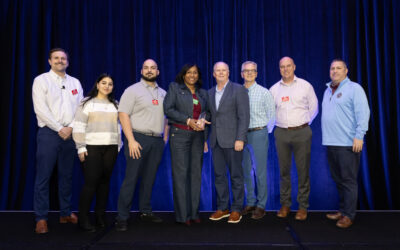Hurricane Irene and Hurricane Sandy made Northeast landfall in 2011 and 2012, respectively. Collectively, they caused over $83 billion in damages, and caused more than 300 deaths. And, this year, meteorologists and hurricane researchers are predicting an above average hurricane season.
The 2021 hurricane season
A typical hurricane season has 12 named storms, six hurricanes and three major hurricanes. A major hurricane is defined by wind speeds reaching Category 3, 4 or 5 on the Saffir-Simpson Wind Scale. To put this into perspective—Hurricane Irene and Hurricane Sandy both were Category 3 storms. If Category 3 hurricanes can cause as much damage as these hurricanes did to the Northeast, then imagine categories 4 and 5. And, just last year, the U.S. had a staggering 30 named storms—with 13 hurricanes and six major hurricanes.
This year, researchers are predicting that there will be 17 named storms—eight of them will become hurricanes, and four of them will become major hurricanes. But remember: These are just predictions. Researchers predicted only about 16 named storms last year.
What makes a hurricane stronger?
Typically, hurricanes form and hit landfall where there is warmer water. They need warmer temperatures to stay strong. As they travel north, many hurricanes dissipate or lessen in intensity to become tropical storms or subtropical storms, because the temperature of the Atlantic Ocean is lower in the north. However, the U.S. Environmental Protection Agency keeps track of oceanic temperatures for all of the globe’s oceans—and all of them are trending toward warmer temperatures.
What can you do?
Hurricane season runs from June 1-Nov. 30. As you know, it takes 30 days for a flood policy to go into effect, so the time to start talking to your clients about flood insurance is now.
Recently, the National Association of Insurance Commissioners published a survey that shows that the majority of homeowners are concerned about climate- and weather-related threats. So, start talking to your clients about the importance of flood coverage—it’s vital that they are covered in the event of another hurricane or tropical storm in the Northeast. And, research shows that it’s entirely possible that the Northeast could see another major hurricane.
PIA is here for you
If this year is anything like last year, it’s best to be prepared. And, PIA can help you. To help you start the conversation about flood coverage with your clients, PIA offers resources through its Hurricane Info Central and PIA Design & Print. Hurricane Info Central is a one-stop shop for all your hurricane-related tools, including state-specific insurance department information, and pertinent QuickSource and Ask PIA resources on topics such as hurricane deductibles, flood policies and more. PIA’s Design & Print can help agents order materials to help their clients prepare for hurricane season, too. For more information, email Calley Rupp.

Alexandra Chouinard
Alexandra Chouinard has editing, writing, advertising and publishing experience from her Alma Mater, Loyola University, where she earned a dual Bachelor of Arts Degree in Writing and Communication.





